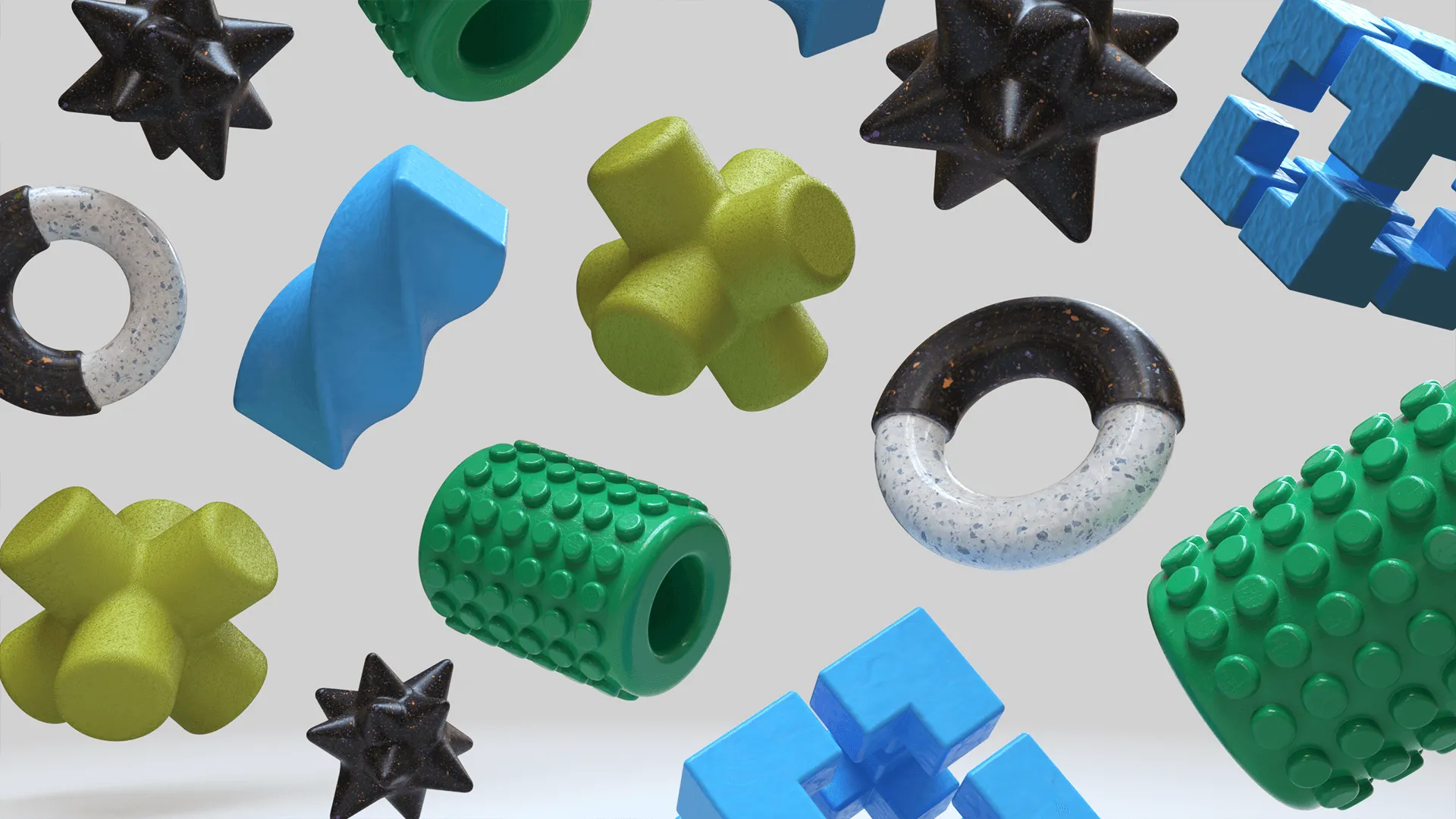
Creating photorealistic 3D renders traditionally requires sourcing texture maps from multiple websites, managing complex material nodes, and adjusting dozens of technical parameters. Most beginners struggle with UV mapping, PBR workflows, and shader networks.
Womp provides 500+ professionally crafted materials that apply with one click - no texture mapping knowledge required.
Expertly designed photorealistic materials featuring authentic surface textures, bump mapping, reflections, and physical properties. The collection includes realistic representations of wood grain, metal finishes, stone surfaces, fabrics, glass, plastics, concrete, leather, and organic materials.
Key advantages:
Natural materials:
Manufactured materials:
Textile materials:
Select object in canvas, open properties panel, navigate to materials section, choose from Super Materials collection. Material applies instantly with immediate visual preview. All customization controls appear automatically in properties panel.
Application scope:
Maintains object's existing color while applying material's texture properties. Preserves color schemes when adding realistic surface detail. Essential for brand consistency and design specifications.
Use cases: Product mockups requiring specific brand colors, maintaining color palettes across designs, adding texture without color changes.
Links texture size to object scale, preventing distortion during resizing. Textures scale proportionally with objects maintaining consistent surface appearance. Eliminates stretched or compressed texture artifacts.
Workflow benefit: Resize objects freely without adjusting texture settings separately. Particularly useful for iterative design processes.
Offset controls (X, Y, Z): Move texture across surface without moving object geometry. Fine-tune pattern alignment and positioning.
Rotation control: Rotate texture independently from object orientation. Align wood grain, adjust pattern directions, control visual flow.
Scale control: Adjust texture size relative to object surface. Enlarge or reduce pattern detail independently from object dimensions.
Height control: Modify bump mapping depth and surface relief intensity. Control how dramatically texture affects perceived surface topology.
Many materials include color pickers for customization beyond base appearance. Some materials offer single color control, others provide multiple color selections for complex surfaces.
Application: Match specific design requirements, create color variations, coordinate material palettes across scenes.
When objects blend via Goop tool, applied materials transition smoothly between surfaces. Creates organic material mixing effects impossible with traditional Boolean operations.
Creative applications:
Apply Super Material as base layer, then paint additional textures using Stain tool for complex layered effects.
Process requirements:
Results: Multi-material surfaces, painted details on textured bases, custom wear and weathering effects.
Normal materials: Basic solid colors without texture detail. Fastest rendering performance, suitable for simple designs and color blocking.
Pro materials: Enhanced materials with texture properties and improved surface quality. Middle tier between basic and photorealistic.
Super Materials: Full photorealistic rendering with comprehensive texture mapping, bump mapping, reflection properties, and extensive customization. Highest visual quality with increased processing requirements.
Super Materials require more computational power than simpler material types due to:
Optimization strategies:
Material count: 500+ expertly crafted options with regular additions
Compatibility: All Womp object types, curves, curve points, imported meshes, Goop-blended geometry
Customization parameters:
Super Materials access requires Womp Pro subscription ($12.99/month or $119.99/year). Included with all Pro features without additional cost.
Also included in Pro:
Free users access Normal materials only. Pro materials and Super Materials require active subscription.
Product visualization: Apply accurate material representations to product designs. Wood finishes for furniture, metal textures for electronics, fabric materials for soft goods.
Architectural rendering: Realistic building material representation. Stone facades, wood flooring, concrete structures, glass windows with accurate properties.
Character design: Organic materials for skin, clothing fabrics, leather accessories. Realistic surface quality for character props and environments.
Jewelry design: Precious metal finishes, polished surfaces, gemstone materials. Professional quality renders for client presentations.
Industrial design: Technical materials for manufactured products. Plastic housings, metallic components, rubber elements, composite materials.
Material selection strategy:
Texture customization approach:
Scene optimization workflow:
Start creating with Super Materials - requires Womp Pro subscription.